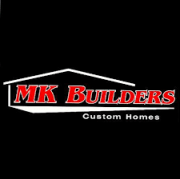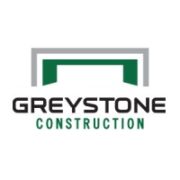Roof leaks are painful, messy, and unexpected. And unfortunately, the matter of fact is that your roof can leak at any time, at any point throughout its lifespan. But, some factors can make leaks even more plausible such as cumulative damage and an old roof.
Luckily, there are a few ways to spot and repair these leaks on your own to prevent any catastrophic damage down the road. We’re going to show you a few DIY roof repair tips.
How To Find & Fix Roof Leaks
Knowing the signs of a roof leak can save you a ton of pain and strife by catching it before water damage spreads. The earlier you fix a roof leak, the better off you’ll be.

Tell-Tale Signs of a Leaky Roof
A water spot on your ceiling is a quick and obvious sign that your roof is leaking, and you need to act fast because it’s either a large leak or one that’s been going on for a while. Luckily, there are a few tell-tale signs of roof leaks that you can spot long before it reaches your ceiling.
Keep an eye out for these early signs of a leaky roof:
- Water spots on your ceiling or walls.
- Water spots on your attic floor or ceiling.
- Missing shingles.
- Cracked or damaged shingles.
- Loose or damaged flashing.
- Damaged roof pipe boots.
If they are damaged, all of these areas leave your roof highly susceptible to water leaks. If you can notice this damage right away after a severe storm, you have an opportunity to repair it and prevent water leaks.
It’s important to remember that the water spot on your ceiling may not actually be where the leak is located. If you can, look for flow lines on your attic ceiling or get a roofer to closely examine your shingles to pinpoint the leak.
Water leaks are detrimental to your home because they not only damage your roof, ceilings, walls, and anything else they come into contact with, but if they go unnoticed or unfixed, they can lead to mold growth.
Breathing in mold and mildew in your home is very bad for your health and can cause you to be very sick. So noticing these early signs of a roof leak are critical to maintaining a safe, healthy home and a roof that protects you.
How to Fix Small Roof Leaks
If you spot a small roof leak, there are a few simple ways to quickly fix it, at least to buy you time until you can have a professional make any more significant repairs.
Solutions for a small leak can be as easy as:
- Applying caulk around exposed nails in your attic ceiling;
- Replacing the one missing or damaged shingle, plus any surrounding shingles to ensure a tight seal;
- Replacing damaged or missing flashing in the necessary areas (checking it regularly can help prevent leaks);
- Repair or replace the sheathing and underlayment.
Pros and Cons of DIY Repairs
Some people may want to fix a tiny hole or leak themselves. This is fine, but we don’t recommend it. There are benefits and drawbacks of DIY roof repair. We’ll lay it out so you can make an educated decision and know when to hire a professional.
Pros of DIY Roof Repair
- If you have the expertise to get the job done, the amount of money you can save on labor is significant. If all you need is to purchase the materials, you can save over half the cost of hiring a professional.
- You get to control your timeline. For example, sometimes construction projects can interrupt your family time or home life, and if that’s not something you want to deal with, you can do the work on your own time.
Cons of DIY Roof Repair
- It will take you a lot longer than it would take the pros. Chances are, if you DIY your roof, you don’t have a large professional team of contractors to get it done within days.
- You may not possess every tool necessary to get the job done right. However, the pros carry every high-tech tool they need to get the job done quickly and efficiently.
- You risk voiding your warranties. Most warranties on materials (like shingles) are contingent on proper installation. If you don’t know the proper way to install a particular brand or type of shingle, you can immediately void that product’s warranty.
- If you make even a minor mistake, you’ll end up having to hire a team of roofing professionals anyways. No matter how much experience you may have, you don’t roof regularly and may be a little rusty. The pros have seen and handled it all, and that’s not something you can compete with.
- Lastly, you have a higher risk of physical injury or property damage. Again, without the proper protocols and safety equipment, you boost all of your risks by doing it yourself, especially if you have other, less qualified individuals helping you.

As you can see, from our perspective, the cons severely outweigh the pros of DIY roof repair.
However, if you were a roofer in a past life and believe your expertise can handle the job, check out our DIY Roofing Guide with everything you need to know about replacing your own roof. And before you begin, check out some of these vital DIY roof repair tips below to help you on your journey.
Helpful (And Critical) DIY Roof Repair Tips
Even the savviest homeowner should consider hiring a professional roofer to repair their roof or other things in their home. These tips can help avoid issues down the road and prevent injury and voided warranties by attempting to DIY.
Wear the Proper Gear
There is definitely a right and a wrong way to dress for roofing jobs, from your clothing to safety gear. Make sure to wear long sleeves, long pants, and non-slip rubber-sole shoes to ensure you’re safe from any sharp objects, sun exposure, etc. You should also have safety goggles or glasses and thick work gloves.
Lastly, invest in a roofing harness. It’s hazardous to work up on a roof, especially if you’re inexperienced. The Guardian Roofing Harness Kit is an excellent investment for homeowners and contractors alike.
Utilize Roofing Adhesive and Caulk
If you’re patching a hole or fixing a minor roof leak, roofing adhesive and caulk can be an additional measure to ensure a watertight seal. There’s no shame in re-sealing your job to make sure it never leaks again!
Don’t Eyeball It: Use Chalk Lines
Your shingles work best when properly installed in line with each other. And when you’re repairing just one small section, it can be hard to get it to match up with the original installation. So using chalk lines can ensure you get a perfectly straight line when installing your new replacement shingles.
Never Work Alone
This is very important—always work with at least one other person when you’re up on the roof. Even if this person holds the ladder and hands you tools, they can ensure you stay safe and are there in case of an emergency. Plus, any roofing job will go much faster with more than one person. For safety, and efficiency, never work alone.
Invest in Better Tools
Sure, you can get by with a hammer tacker and nails, but investing in a high-pressure pneumatic nail gun or a cordless nailer can save you tons of time and energy. Pneumatic nail guns are powered by an air compressor and shoot high-powered nails into your shingles to ensure a tight fit.
This tool could also be used universally for other things around the house, like building a flower bed or other woodwork. Trust us when we say it’s worth getting the right tools to get the job done.
Check Your Flashing
Your roof’s flashing is one of the most susceptible areas for damage or leaks. Because step flashing is often exposed to the elements, it can experience more wear and tear and get battered by high winds, hail, and rain more than anything else. Be sure to check your flashing around chimneys, dormers, walls, etc., regularly to catch any issues as early as possible.
Regularly Maintain Your Roof
Roof maintenance is one of the best and easiest ways to avoid roofing issues. By keeping your shingles, flashing, and gutters clean, you can avoid years of expensive repair bills. And be sure to inspect your roof regularly for any missing or damaged shingles.
Know Your Limits
One of the biggest mistakes DIY homeowners make is attempting to tackle a job they are ill-fitted for. Knowing what you can and cannot handle can save you from injury and cause more significant issues like massive water leaks. Plus, DIY roof repair can void active warranties if you don’t do it right. Before you go too far, know when to call the professionals.
When to Repair vs. Replace Your Roof
While DIY repairs can buy you time, they aren’t always appropriate and you may want to consider replacing your roof instead of repairing it. There are a few times when a replacement is going to be preferred over repairs.
You’re Out of Warranty
The first thing to check on is whether or not your roof was installed with a warranty. If the warranty is expired, you will likely not get any repairs or replacements covered at this point. However, having a warranty makes it much easier for you to justify the cost of a new roof because repairs that may come down the line, will be covered under that warranty.
You Have Ongoing Leaks
If your roof is leaking extensively and repeatedly, this may indicate that it’s too far gone to repair successfully. This can cause a lot of damage inside your home and may even lead to mold growth. And paying for repairs out of pocket can add up quickly and replacement may be your best bet.
Your Roof Is Old
Once your roof reaches its intended lifespan, it loses integrity day by day. Roof’s sadly aren’t built to last forever, so once your roof gets too old you may notice more issues and will probably be making more frequent repairs. So when your roof gets to be 20, 30, or 40 years old (depending on the material) you will want to look into getting it replaced. A professional roofer can inspect it and tell you for sure.
Your Roof Is Sagging
If your roof is bulging or sagging in places, it’s definitely time for a replacement. This can be a sign that the roof structure has shifted and rotted under the shingles making them weak and unable to perform their job properly.
There Is Extensive Water Damage
Water damage can rot the shingles, wood, and even your home’s structure if left unnoticed or untouched. Signs of extensive water damage could be bubbling in the walls or ceiling, large water stains in ceilings or the attic floor, flat attic insulation, and sagging or discoloration of your roof shingles.
This makes for unsafe conditions for your home as it can lead to mold and mildew growth as well as rotting wood. It’s vital to get this repaired as soon as possible before it leads to a necessary roof replacement.
You’re Looking to Sell
Getting a new roof can be a great way to sell your home faster, and boost the overall value of your home. This may be the case for more premium roofing materials, but if spending $5,000-$10,000 on a new asphalt shingle roof means you can sell your home for $15-30,000 more— it may be worth the investment.
You Have Recurrent Ice Dams
Ice dams are an unfortunate consequence of living in colder climates. Once snow builds up on your roof, it can melt and refreeze at the edge of your roof line where the gutters meet. This is called an ice dam and it can cause water to back up and leak into your home’s roof decking, insulation, and even the ceilings. If this is a persistent problem, getting all of your shingles replaced and a new ice dam shield can help prevent the damage from happening again in the future.
Ultimately, knowing when to replace instead of repair your roof will come down to the extent of damage and the age/integrity of your roof. If you’re unsure whether your roof needs to be repaired or replaced, it’s always best to consult with a professional roofer. They will be able to give you an accurate assessment and help you make the best decision for your home.
When to Get Help From the Pros
Your roof is meant to protect you and your family from the elements, keep your HVAC systems working in top form, and prevent damage to the rest of your home from water leaks or other infiltration. So why would you want to treat it as less?
If you want to protect your investment in your home, then hire a trustworthy contractor vs. DIY. They can do repairs and replacements within a day, and you can get back to your life knowing you’ve got a roof to last. From small leaks to large roof installs, Apple Roofing has a team of experts that can handle any job you throw their way. We will get to the root of the issue and provide solid solutions to get your roof back in top-tier condition. Get started here.
























